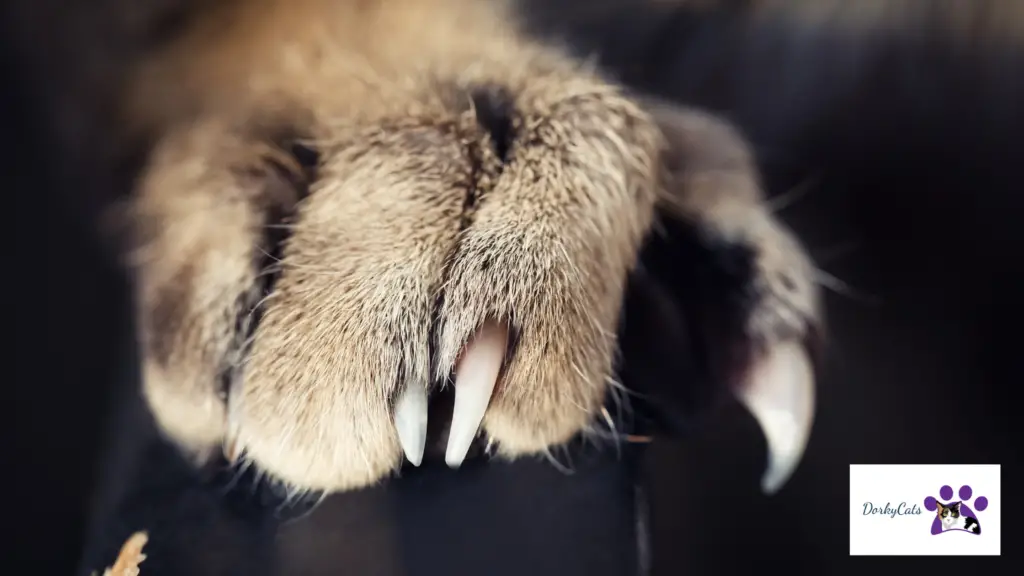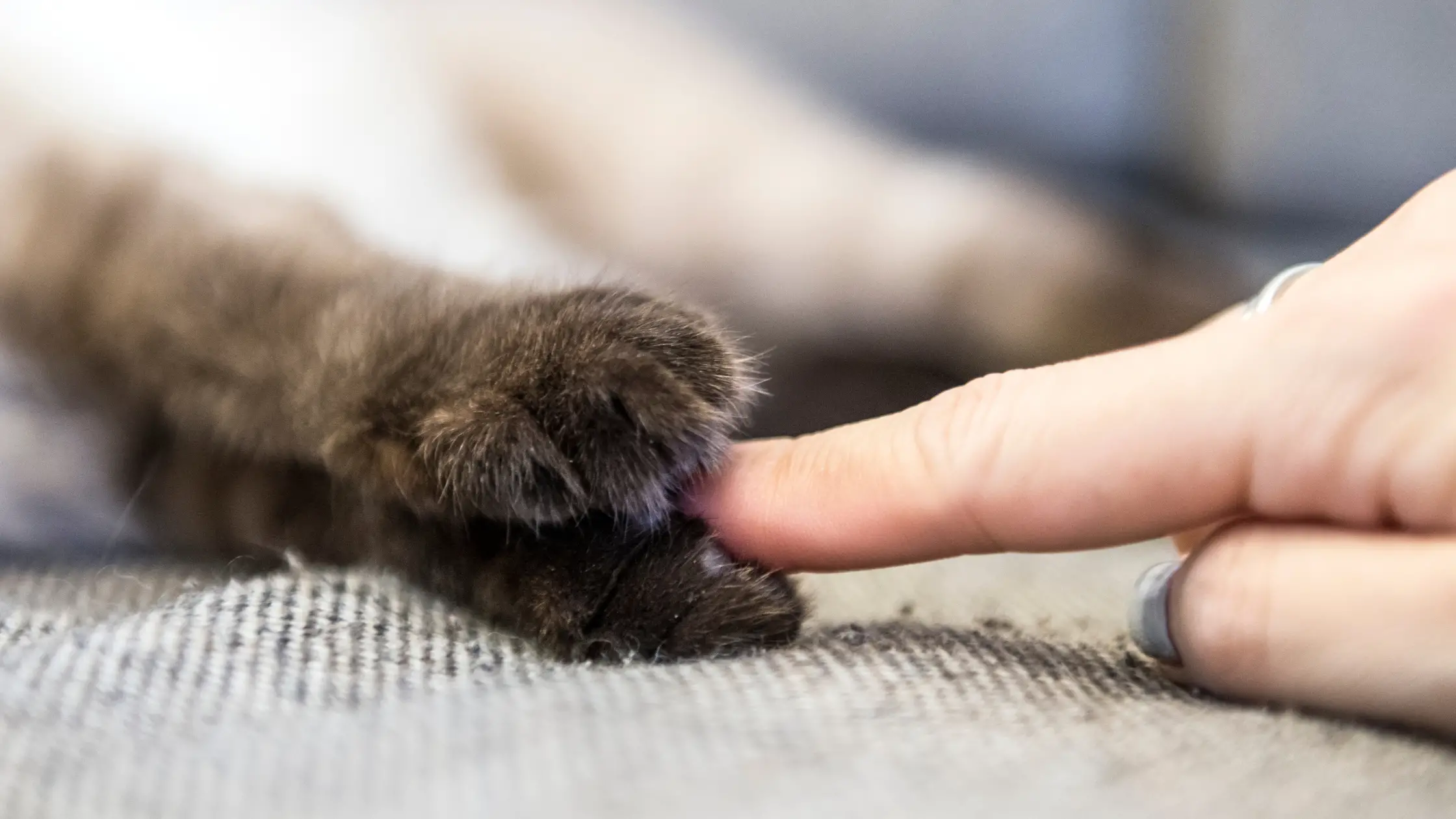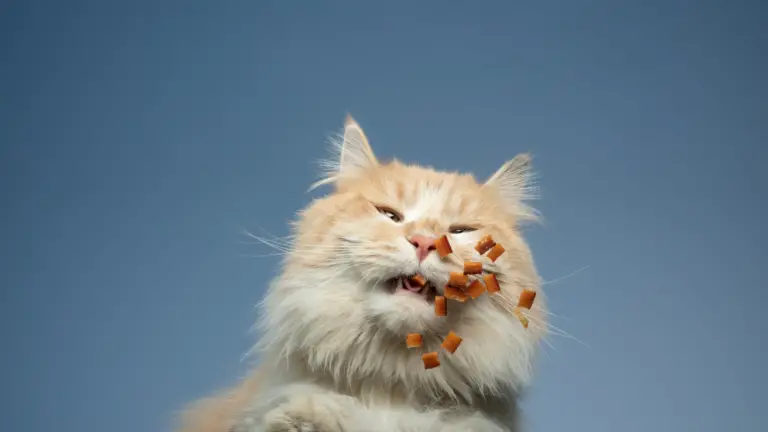WHAT CAN I DO INSTEAD OF DECLAWING MY CAT? 11+ EASY SOLUTIONS
What can I do instead of declawing my cat? It is generally better to avoid declawing a cat.
Declawing is a painful and invasive surgical procedure that removes the claws and the bones of the cat’s toes.
It can cause long-term physical problems, such as chronic pain, lameness, difficulty walking, and behavioral problems, such as litter box avoidance and aggression. Additionally, declawing can make a cat less able to defend itself and can negatively impact its quality of life.
There are many alternatives to declawing, such as providing scratching posts, trimming claws, and using deterrents to help manage destructive scratching behavior without causing harm to the cat.
Let’s see what the best ways to prevent unwanted scratching behaviors are.

WHAT CAN I DO INSTEAD OF DECLAWING MY CAT?
Declawing a cat, which involves surgically removing the tips of its toes, is considered inhumane and can cause long-term physical and behavioral problems. Therefore, at dorkycats, we are against this practice.
Instead, here are some alternative solutions for managing destructive scratching behavior in cats:
1. PROVIDING SCRATCHING POSTS
Place scratching posts in areas where your cat likes to scratch, such as near their bed or in a sunny window. Encourage your cat to use the posts by spraying them with catnip or rubbing them with a piece of cloth.










2. TRIM THE CAT NAILS
Regularly trimming your cat’s claws can help reduce the damage they cause to your furniture.
It is possible to get a lot of benefits from trimming the claws. For example:
- Reduced damage to furniture and other household items: Trimming a cat’s claws can help reduce the damage they cause to furniture, curtains, and other household items.
- Improved hygiene: Long claws can trap dirt and bacteria, leading to infections and other health problems. Trimming can help keep the claws clean and healthy.
- Better mobility: Overgrown claws can make it difficult for a cat to walk or jump and can cause discomfort and pain. Trimming can help improve their mobility and comfort.
- Reduced stress: Destructive scratching can be a source of stress for both the cat and the owner. Trimming the claws can help reduce this behavior and reduce stress for both parties.
- Bonding time: Trimming can be an opportunity to bond with your cat and help you become more familiar with their paws and nails.
Trimming a cat’s claws should be done regularly, typically every 4-6 weeks, and can be done at home or by a veterinarian or groomer.
It’s essential to use a sharp, sturdy clipper specifically designed for cats and not trim too far and cause bleeding. If you’re unsure how to trim your cat’s claws or if they are uncomfortable with the process, seek the advice of a veterinarian or a professional groomer.
3. USE DETERRENTS
Double-sided tape or aluminum foil on areas you want to protect can discourage your cat from scratching there.
4. REDIRECT THE CAT ATTENTION
When you see your cat scratching where it shouldn’t, try redirecting its attention to a scratching post or toy.
5. GIVE ALTERNATIVE SURFACES
If your cat is scratching furniture, provide an alternative surface they can scratch, such as a cardboard box or old towel.
6. CONSULT A FELINE BEHAVIORIST
A feline behaviorist is a professional who specializes in understanding and modifying cat behavior. If your cat is scratching inappropriately, a feline behaviorist can help you address the issue in several ways, including:
- Identifying the cause: A feline behaviorist will work with you to identify the cause of the scratching behavior, which could be related to stress, anxiety, boredom, or medical issues.
- Developing a customized plan: Based on the cause of the behavior, the feline behaviorist will develop a customized plan that addresses the specific needs of your cat, including recommendations for environmental enrichment, training, and medication, if necessary.
- Teaching positive behavior: The feline behaviorist will teach you how to reinforce appropriate scratching behavior, such as using scratching posts, and how to redirect your cat away from inappropriate scratching surfaces.
- Addressing underlying anxiety: If the scratching behavior is related to anxiety or stress, the feline behaviorist can help you implement techniques to reduce your cat’s anxiety and create a more calming environment.
- Monitoring progress: The feline behaviorist will work with you to monitor the progress of your cat’s behavior and make any necessary adjustments to the plan.
7. COVER FURNITURE
Protect your furniture by covering it with throws or blankets. You can also purchase furniture protectors specifically designed for this purpose.








8. POSITIVE REINFORCEMENT
Train with positive reinforcement: Use treats and praise to reinforce good scratching behavior on appropriate surfaces.
9. SCRATCHING STATIONS
Create a scratching station: Designate a specific area for your cat to scratch and place scratching posts, pads, or boards in that area.
10. USE PHEROMONES
Pheromones, such as Feliway, can help reduce stress and anxiety in cats, which can contribute to destructive scratching behavior.
11. EXERCISE
Provide plenty of toys and opportunities for play and exercise to help your cat burn off excess energy.
Remember, every cat is different, and it may take trial and error to find the best solution for your pet.
12. NAIL CAPS
Nail caps are soft, flexible covers that are placed over a cat’s claws. They are typically made of plastic or silicone and are designed to dull the sharpness of a cat’s claws, reducing the damage they cause to furniture and other household items.
Nail caps can also be helpful for preventing accidental scratches on people or other pets.
It’s important to note that nail caps are not a cure-all solution for destructive scratching behavior, and providing adequate scratching opportunities for your cat is still essential. However, nail caps can be a valuable tool in managing the behavior of cats with excessive scratching.
It’s also essential to choose the right size of nail cap for your cat and to follow the instructions carefully when applying them.
CAN CATS DECLAW THEMSELVES?

No, cats cannot declaw themselves. Declawing is a surgical procedure involving removing the bones of the cat’s toes and claws. A veterinarian typically performs it using a scalpel, laser, or cautery instrument.
The procedure is considered to be painful and invasive and can cause long-term physical and behavioral problems. As a result, many animal welfare organizations and veterinary associations discourage the practice of declawing.
Cats do have the ability to shed their claws naturally, but this process does not remove the bones of the toes, and it does not cause long-term physical and behavioral problems associated with declawing.
Additionally, cats have a natural instinct to scratch, which helps keep their claws healthy and sharp and serves as a form of physical and psychological exercise. By providing your cat with adequate scratching opportunities, you can help keep its claws healthy and reduce the risk of destructive scratching behavior.
DOES DECLAWING A CAT CAN CHANGE HIS PERSONALITY?
Declawing a cat can change its personality in some cases. In addition, the procedure can cause physical pain and discomfort, leading to changes in a cat’s behavior, such as increased aggression, shyness, or avoidance of certain activities.
Declawing can also lead to long-term health problems, such as chronic pain, joint stiffness, and behavioral issues, which can further impact a cat’s personality and well-being.
Additionally, cats use their claws for self-defense, hunting, and communication, and declawing can affect their ability to express themselves and feel secure.
This can lead to changes in a cat’s behavior, such as increased aggression, nervousness, or other forms of stress.
It’s important to remember that each cat is unique, and the impact of declawing on its personality will depend on various factors, including the cat’s temperament, the method used to declaw, and the aftercare provided.
However, it’s widely recognized that declawing can have a significant impact on a cat’s overall well-being and behavior, and it’s important to consider alternatives to declawing whenever possible.
FREQUENTLY ASKED QUESTIONS
Do vets recommend declawing cats?
Many veterinarians do not recommend declawing cats, and some may refuse to perform the procedure. In recent years, the popularity of declawing has declined, and many veterinary organizations have taken a stance against the practice.
For example, the American Veterinary Medical Association (AVMA) states that declawing should only be considered as a last resort after all other behavior modifications and non-surgical options have been exhausted.
Do cats get sad when you declaw them?
After being declawed, a cat may experience pain, swelling, and difficulty walking or using its paws. In some cases, declawing can also lead to long-term behavioral issues, such as increased aggression, avoidance, or litter box problems.
Can you teach a cat not to scratch?
Yes, you can teach a cat not to scratch by providing it with positive reinforcement and appropriate scratching surfaces.
Can declawing be reversed?
Declawing is a permanent surgical procedure that removes the tips of a cat’s toes and its claws. The procedure cannot be reversed; once a cat has been declawed, it will not regrow its claws.







